In the vast theatre of natural wonders, few performances rival the magnificent aerial endurance of certain bird species. While most birds require regular landings for rest, food, or water, a select few have evolved extraordinary adaptations that allow them to remain airborne for days or even months at a time. These marathon flyers represent nature’s ultimate endurance specialists, pushing the boundaries of what seems physically possible. Their remarkable journeys across continents and oceans have fascinated ornithologists, inspired engineers, and challenged our understanding of physical limitations. This article explores the incredible abilities of these tireless aviators, with special focus on the common swift – perhaps the most impressive aerial marathoner on our planet.
The Swift: Nature’s Ultimate Sky Dweller
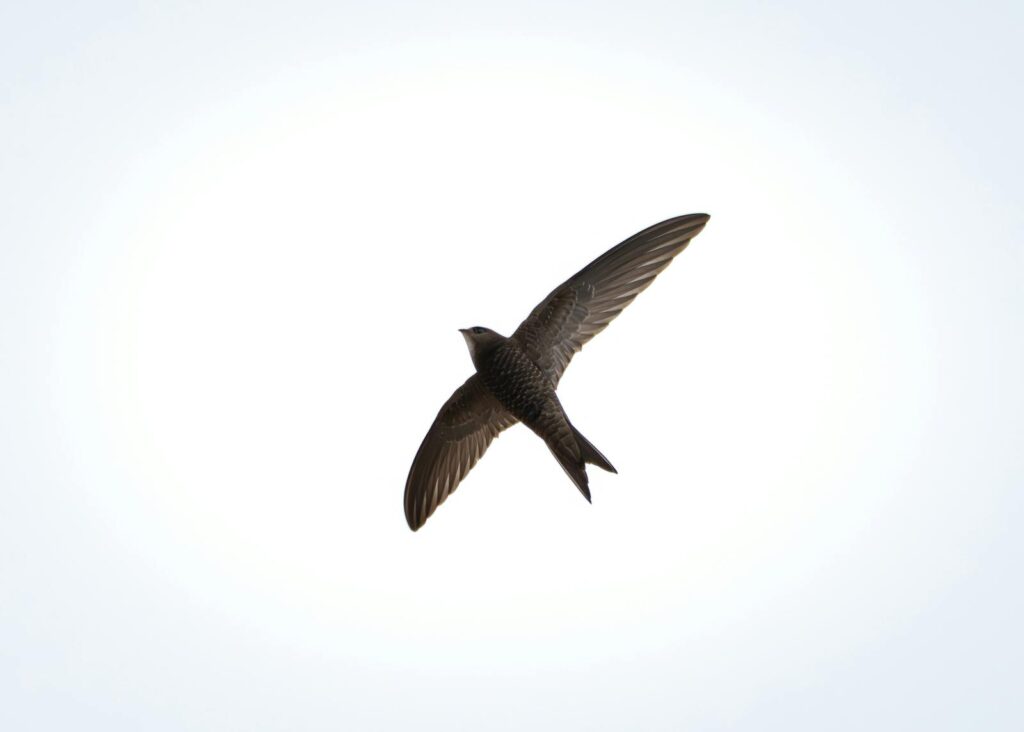
Among flying birds, the common swift (Apus apus) stands as the undisputed champion of continuous flight. These small, streamlined birds with their distinctive sickle-shaped wings have evolved specifically for life on the wing. Scientific studies using lightweight activity loggers have confirmed what researchers long suspected – common swifts can stay airborne for an astonishing 10 months without touching down. Young swifts leave their nest for their first flight and may not land again until they return to breed nearly a year later. During this time, they eat, drink, mate, and even sleep while flying, making them true masters of the air. Their entire physical structure, from their aerodynamic body shape to their specialised muscular system, represents millions of years of evolutionary refinement for sustained flight.
Evolutionary Adaptations for Endless Flight
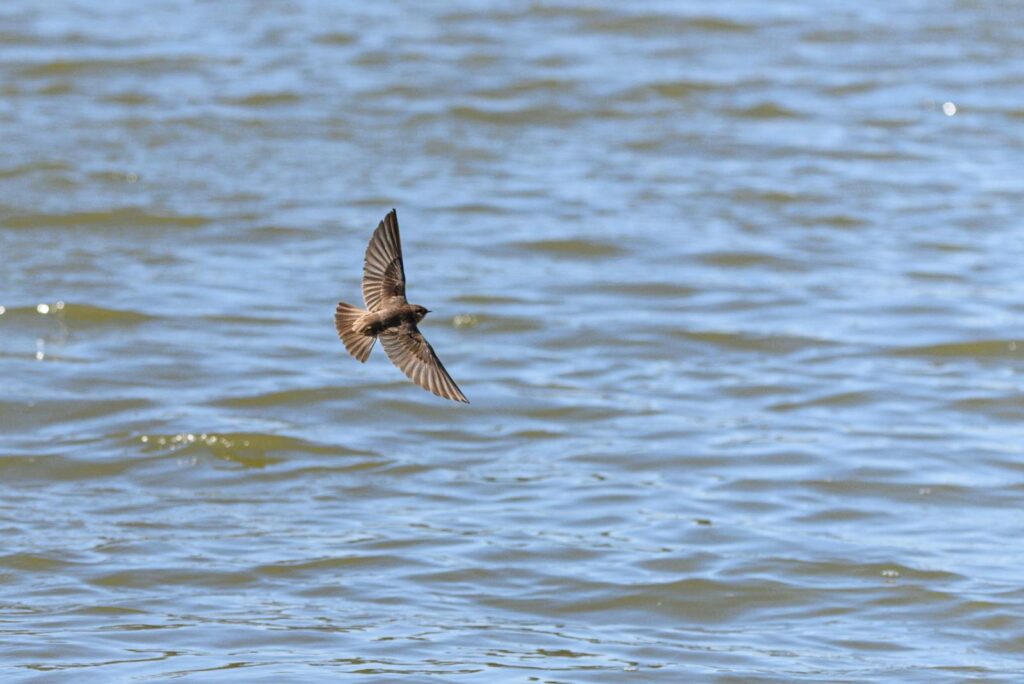
The swift’s remarkable endurance isn’t coincidental but the result of specialised evolutionary adaptations. Their bodies are lightweight yet powerful, with long, narrow wings that provide exceptional lift-to-drag ratios, allowing efficient gliding to conserve energy. Their breast muscles, which power their wings, contain high concentrations of mitochondria and specialised slow-twitch muscle fibres that resist fatigue, similar to those found in human marathon runners. Swifts have also developed a unique respiratory system that maximises oxygen extraction even at high altitudes where the air is thin. Perhaps most remarkably, their feet and legs have become so reduced through evolution that they’re barely functional for perching – evidence of a lifestyle that has increasingly abandoned the need for landing. These birds are essentially living examples of extreme evolutionary specialisation toward a single remarkable capability.
The Mystery of Aerial Sleep
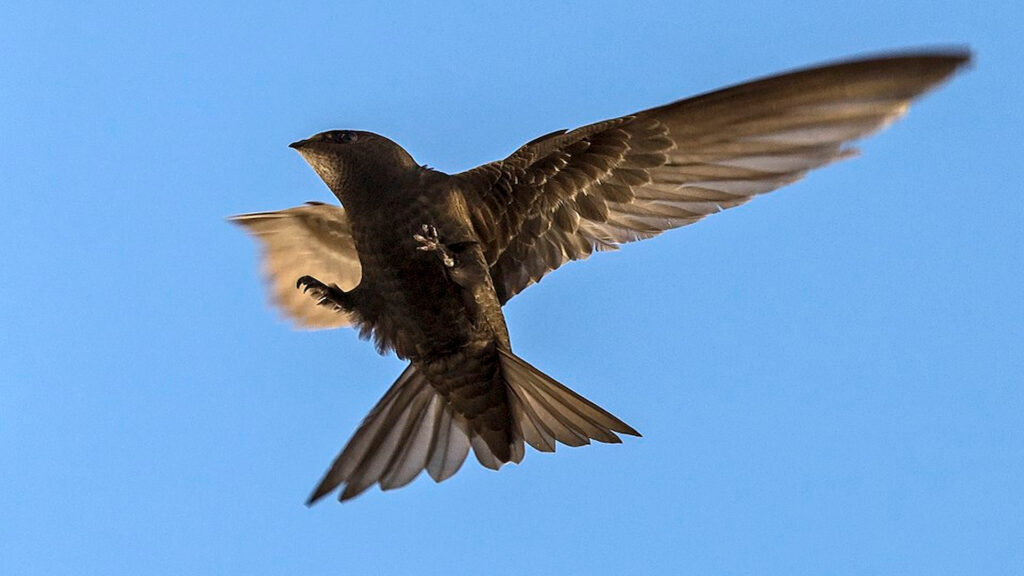
One of the most fascinating aspects of birds that remain airborne for extended periods is how they manage sleep. Research has revealed that swifts and other long-duration flyers like frigatebirds have developed the remarkable ability to sleep while flying. They accomplish this through unihemispheric slow-wave sleep, where one brain hemisphere remains awake while the other sleeps, allowing them to maintain flight control while still obtaining necessary rest. Some studies suggest these birds may also take thousands of micro-naps lasting only seconds each, accumulating enough rest without compromising their flight. Alpine swifts have been observed ascending to higher altitudes in the evening, where they can glide more efficiently while sleeping, before descending in the morning. This adaptation represents one of the most extraordinary solutions to the seemingly contradictory needs for both sleep and continuous flight.
Record-Breaking Migration Journeys
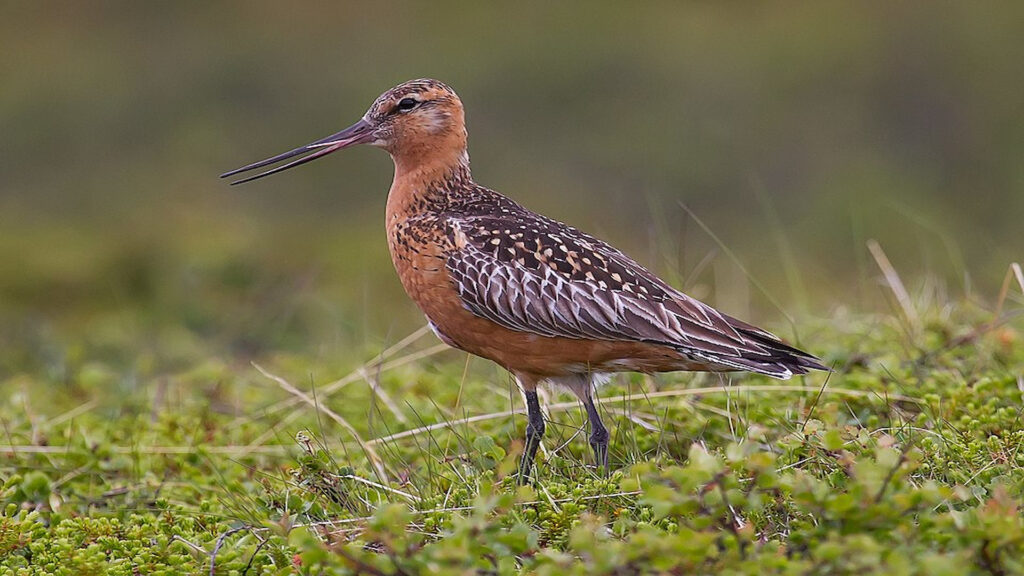
The non-stop flight capabilities of these aerial specialists enable some of the most impressive migration journeys in the animal kingdom. The bar-tailed godwit holds the record for the longest non-stop flight, travelling more than 7,500 miles (12,000 kilometres) from Alaska to New Zealand without a single landing for food or rest. This journey takes approximately nine days of continuous flight over open ocean. Arctic terns make annual migrations from their Arctic breeding grounds to Antarctica and back, covering roughly 44,000 miles (70,800 kilometres) yearly – the longest known migration of any animal. While they do make stops along the way, individual flight segments can last several days. Great frigatebirds have been documented staying aloft for up to two months during foraging trips over the Indian Ocean. These extraordinary journeys push the boundaries of avian physiology and demonstrate how evolutionary adaptations can produce seemingly superhuman endurance.
Fueling the Marathon: Metabolic Adaptations

Just as important as physical adaptations are the remarkable metabolic systems that power these marathon flights. Long-distance flyers develop extreme hyperphagia (increased eating) before migration, sometimes doubling their body weight with energy-rich fat deposits strategically placed to maintain balance in flight. During extended flights, they gradually burn these fat reserves, which provide more than twice the energy per gram compared to proteins or carbohydrates. Their livers undergo seasonal changes that enhance fat metabolism and energy production. Some species can even reduce the size of non-essential organs during flight to decrease weight and energy requirements – their digestive organs may shrink by up to 25% when not actively feeding. Additionally, these birds maintain precise control over their metabolism, slowing it during gliding phases and ramping up during powered flight, creating an efficiency that human-engineered flying machines cannot match.
Aerial Drinking and Feeding Techniques
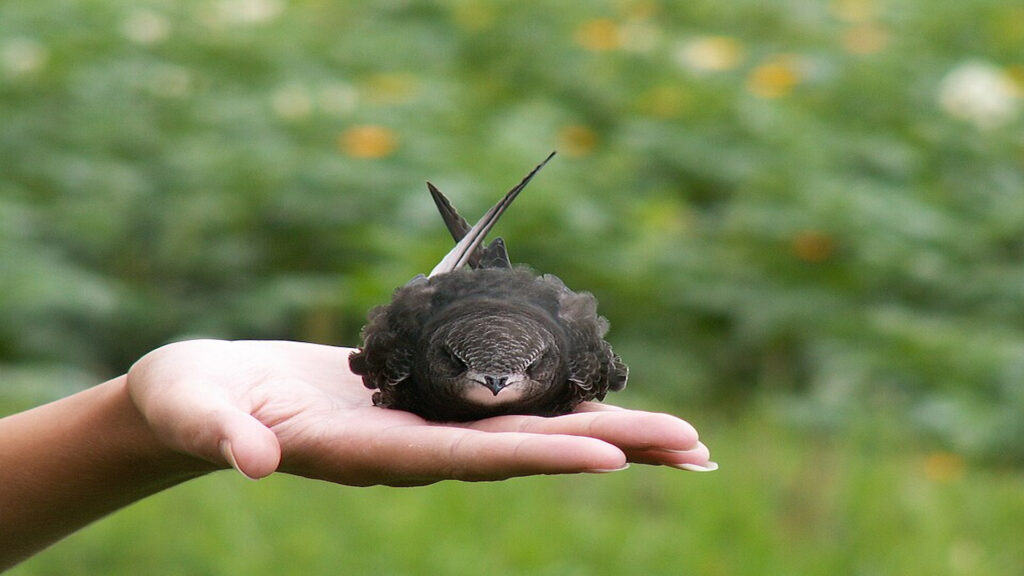
For birds that rarely or never land, obtaining food and water while remaining airborne is essential. Swifts have perfected the art of catching insects on the wing, using their wide gape as an effective aerial net to scoop up flying insects. They may consume thousands of insects daily, all captured during flight. When it comes to drinking, these birds employ a technique called “contact dipping,” where they skim the surface of water bodies, opening their beaks slightly to collect water without fully landing. Despite being seabirds, Frigatebirds cannot land on water due to the lack of waterproofing oils in their feathers. Instead, they snatch food from the ocean’s surface or harass other birds until they regurgitate their catch. Some species have even been observed collecting raindrops and dew from clouds during flight. These sophisticated feeding methods represent essential adaptations for species committed to an aerial lifestyle.
The Alpine Swift: High-Altitude Endurance Specialist
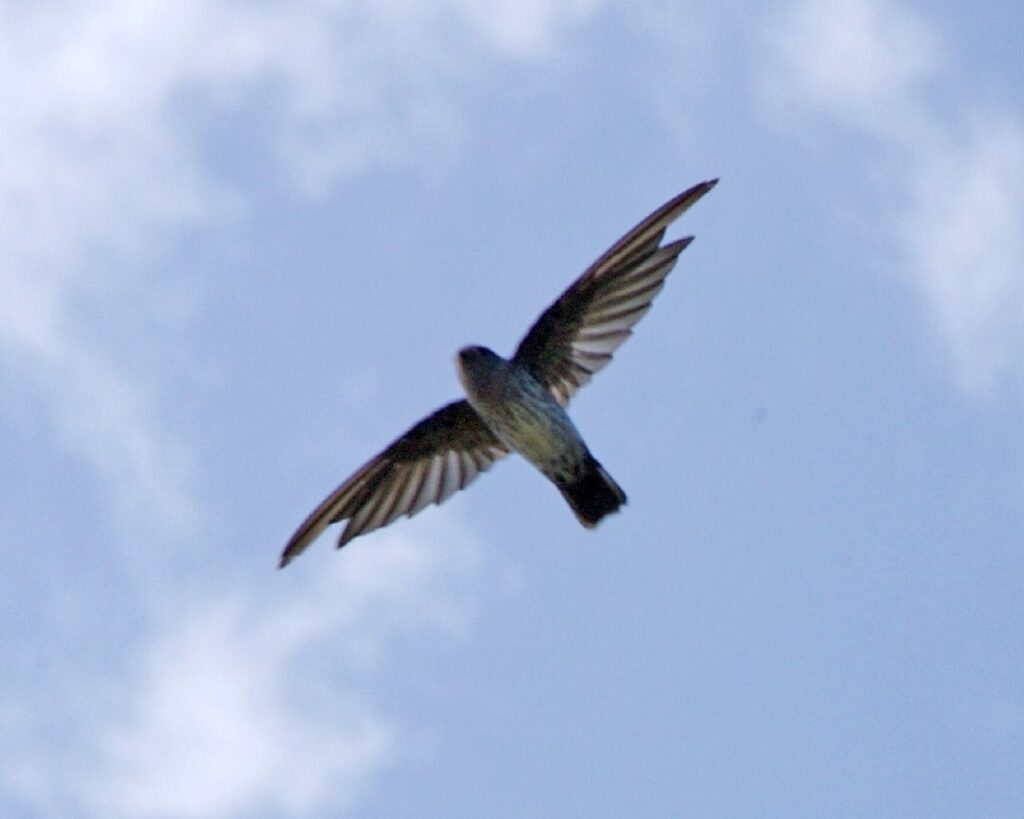
While the common swift holds records for duration, its cousin, the Alpine swift (Tachymarptis melba), specialises in high-altitude endurance flight. These larger swifts breed in mountain regions across southern Europe, North Africa, and parts of Asia, and spend their non-breeding season almost entirely airborne above sub-Saharan Africa. A groundbreaking study using miniature accelerometers attached to Alpine swifts revealed individuals remaining continuously airborne for over six months during their non-breeding period in Africa. These birds frequently fly at altitudes above 10,000 feet (3,000 meters), where thin air presents additional respiratory challenges. Their large wingspan relative to body size (compared to common swifts) provides greater lift in these challenging high-altitude environments. Alpine swifts have also developed specialised haemoglobin that binds oxygen more efficiently, allowing them to maintain energy production despite reduced oxygen availability at high elevations.
Frigatebirds: Masters of Ocean Soaring
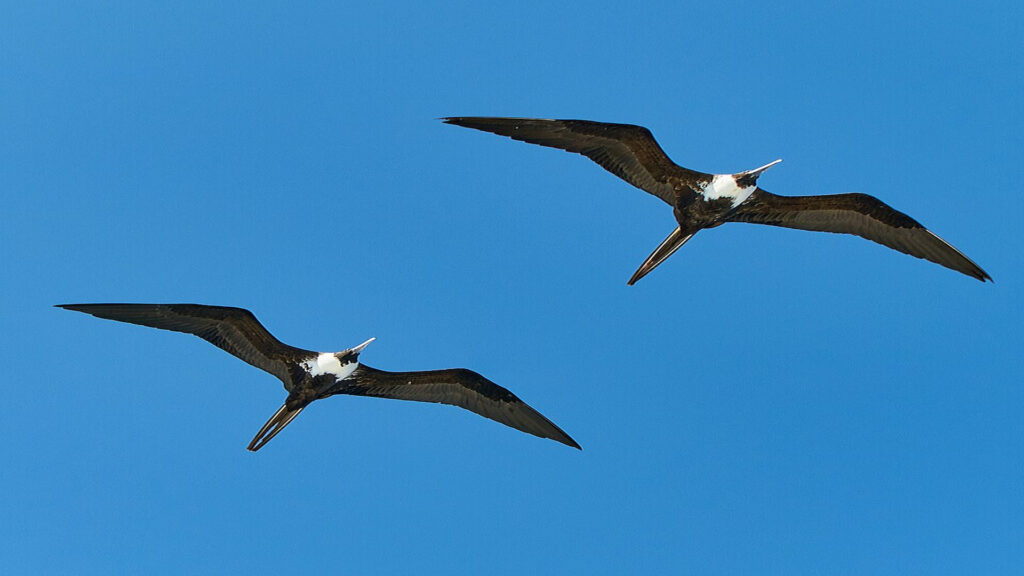
Among seabirds, frigatebirds (family Fregatidae) stand out as exceptional aerial endurance specialists, capable of staying aloft for up to two months during foraging trips. These distinctive birds with their enormous wingspan relative to body weight have the lowest wing-loading of any bird, allowing effortless soaring. Unlike most seabirds, frigatebirds lack waterproof feathers, which paradoxically enhances their aerial lifestyle by forcing them to avoid landing on water. Tracking studies have shown magnificent frigatebirds flying continuous patterns above the Indian Ocean, covering thousands of miles without rest. They have evolved to ride thermal updrafts during the day and use their large wingspan to glide through the night with minimal energy expenditure. Female frigatebirds make particularly long journeys during chick-rearing periods, sometimes travelling 400 miles (640 kilometres) from their nesting site in search of food before returning to feed their young.
The Science Behind Continuous Flight
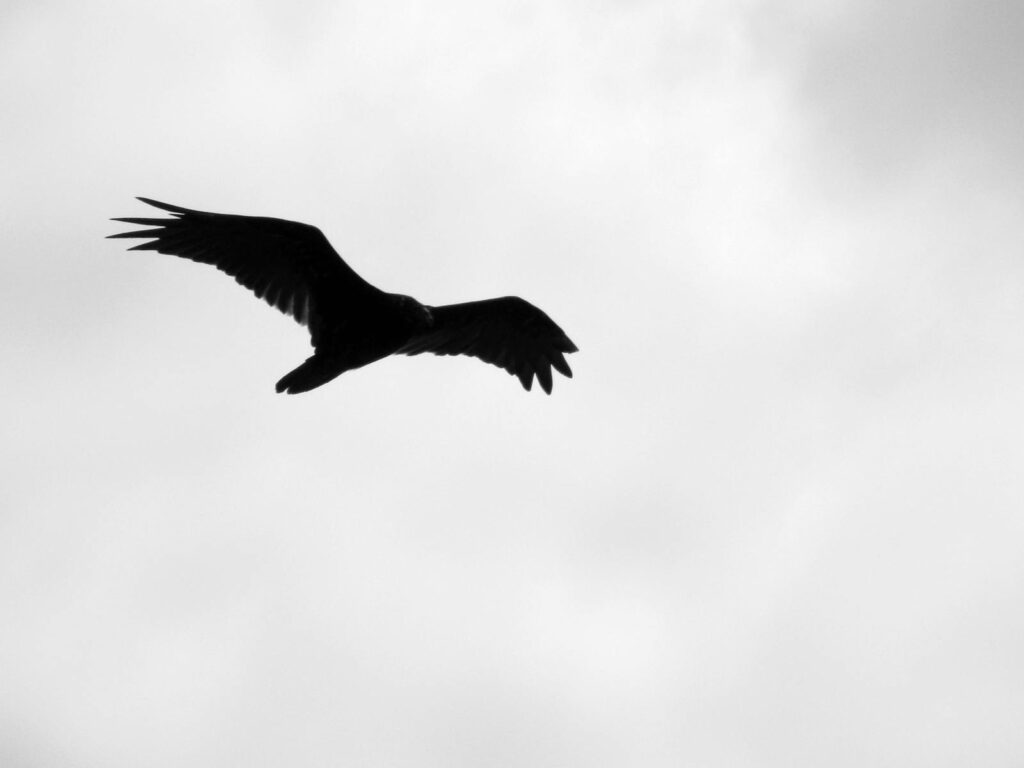
Modern technology has revolutionised our understanding of continuous flight in birds. Miniaturised GPS trackers, accelerometers, and heart-rate monitors now allow researchers to follow individual birds throughout their journeys without disturbing their natural behaviours. These devices have revealed previously unknown migration routes and confirmed the incredible duration of non-stop flights. Aerodynamic studies using wind tunnels and computational fluid dynamics have helped scientists understand how these birds achieve such efficient flight, with some species maintaining an energy expenditure just 15% above their resting metabolic rate while flying. Neurological research has illuminated how their brains manage the sleep-flight balance through hemispheric switching. Molecular biology has identified specialised gene expressions that enhance muscle endurance and fat metabolism. This multidisciplinary approach continues to uncover new aspects of these extraordinary physiological feats, sometimes inspiring biomimetic applications in drone technology and aircraft design.
Conservation Challenges for Aerial Marathoners
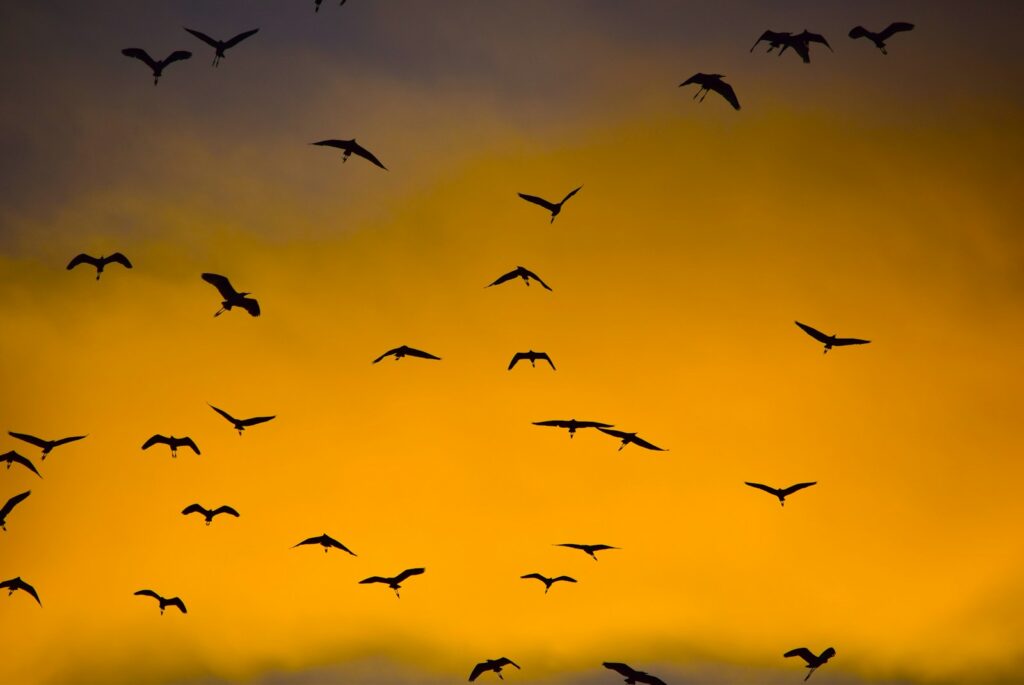
Despite their impressive capabilities, many marathon flyers face significant conservation challenges in the modern world. Common swift populations have declined by over 50% in some European countries over recent decades, largely due to the loss of nesting sites as buildings are renovated or replaced. Light pollution disrupts their navigation and can exhaust migrating birds by drawing them off course. Climate change poses perhaps the greatest threat, as it alters the timing of insect hatches that provide crucial food sources during breeding season. Wind farms, while beneficial for reducing carbon emissions, can present collision hazards along migration routes. Habitat destruction at stopover sites impacts even the most accomplished non-stop flyers, as they must eventually land to breed. Conservation efforts now include “swift bricks” (special nesting cavities built into new constructions), timing building renovations to avoid breeding season, and international protection of key migration corridors.
Lessons from Nature’s Ultimate Flyers
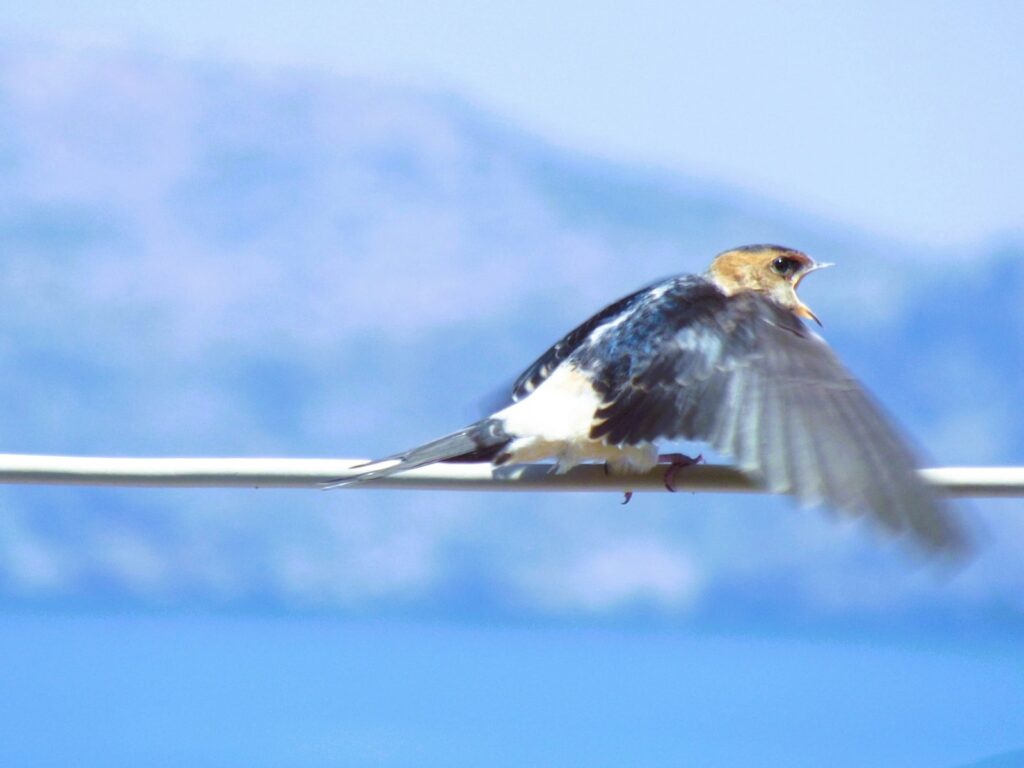
The extraordinary capabilities of birds that fly for days or months without landing offer valuable insights for human innovation. Aerospace engineers study their wing structures and flight dynamics to develop more efficient aircraft designs that require less fuel. Their abilities have inspired the development of long-endurance drones that can monitor environmental conditions or provide emergency communications for extended periods. Physiologists examine their unique energy management systems for insights into human endurance and metabolic efficiency. Sleep researchers investigate their unihemispheric sleep patterns for applications to conditions requiring extended wakefulness, such as long-haul pilots or emergency responders. Perhaps most profoundly, these birds demonstrate how evolutionary processes can produce solutions to seemingly impossible physical challenges. Their adaptations remind us that with sufficient time and selective pressure, nature can develop capabilities that appear to defy physical limitations.
Other Notable Aerial Endurance Champions
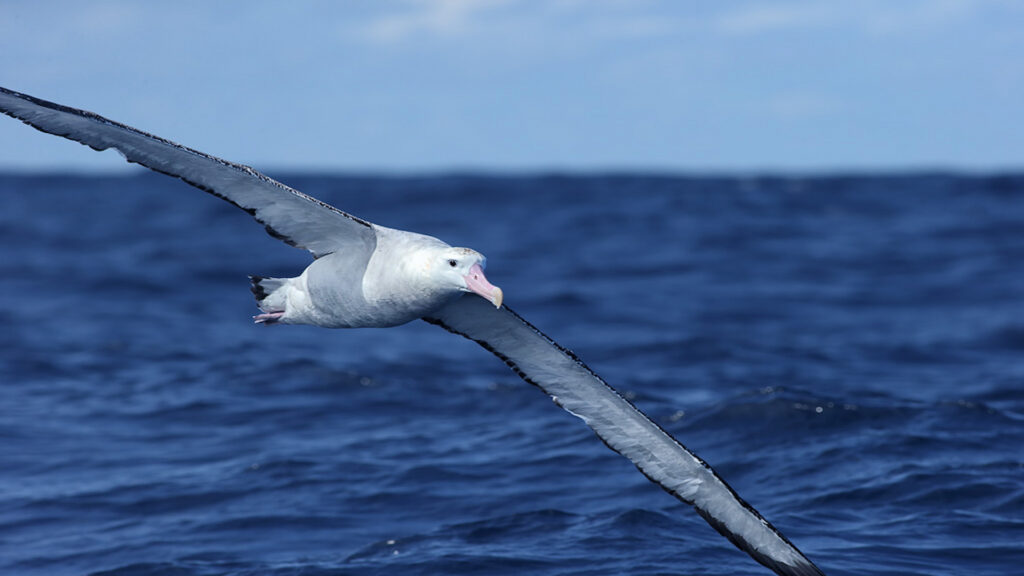
While swifts and frigatebirds may be the most famous continuous flyers, several other species demonstrate remarkable aerial endurance. The wandering albatross (Diomedea exulans) uses a technique called dynamic soaring to travel thousands of miles across the Southern Ocean with minimal energy expenditure, though they do occasionally rest on water. Great snipes undertake non-stop flights of 4,200 miles (6,760 kilometres) from Sweden to Central Africa in just 60-90 hours, maintaining an average speed of 50 mph (80 km/h). Bar-headed geese cross the Himalayas at altitudes up to 29,500 feet (9,000 meters), coping with extreme cold and low oxygen levels during their marathon migrations. Common nighthawks migrate between North and South America, potentially staying airborne for days at a time. Each of these species has developed specialised adaptations for their particular endurance challenges, whether that involves high-altitude flight, extreme distances, or challenging weather conditions.
The Future of Avian Endurance Research
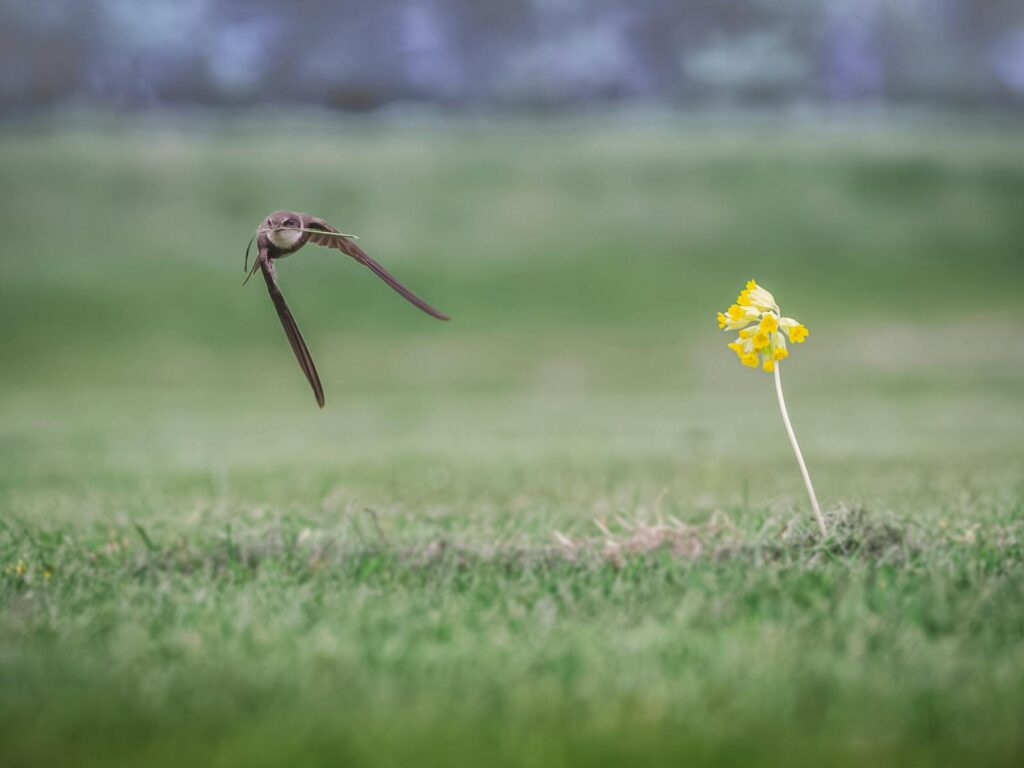
As monitoring technology continues to advance, our understanding of avian endurance flight is poised for significant breakthroughs. New ultra-lightweight sensors will soon allow researchers to monitor not just location and movement but also internal physiological processes during marathon flights. Blood chemistry monitors may reveal how these birds manage lactic acid buildup and prevent muscle fatigue. Brain activity sensors could finally resolve all questions about how they sleep while flying. Multi-generational tracking will help determine whether flight patterns are genetically predetermined or learned. Climate change presents both an urgent research priority and a sobering challenge, as scientists race to understand how warming temperatures and changing weather patterns may affect these aerial specialists. The coming decades will likely reveal even more remarkable capabilities as we develop more sophisticated tools to study these extraordinary birds, potentially uncovering endurance feats that exceed even current records.
Conclusion
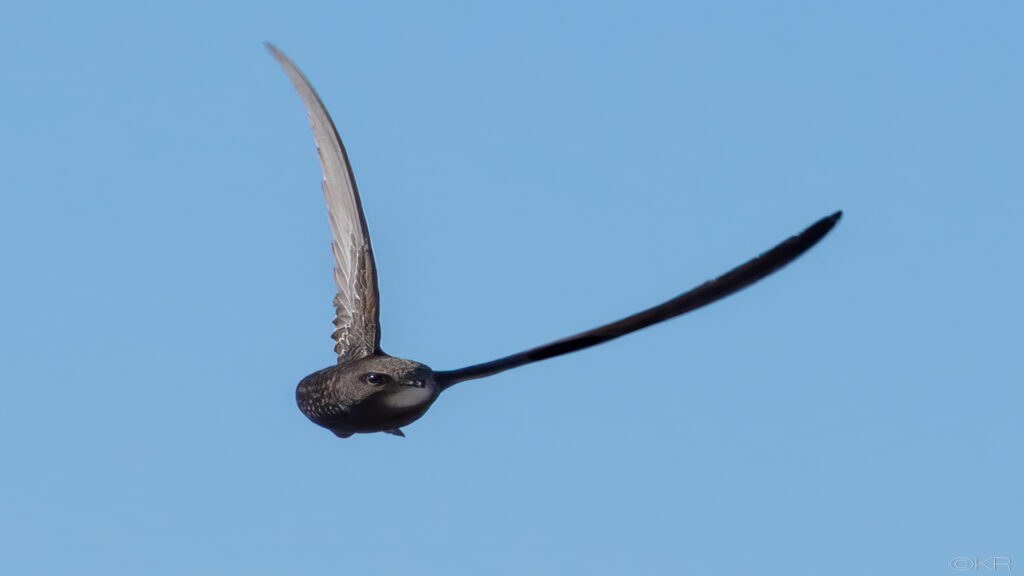
The birds that remain airborne for days, weeks, or months represent some of nature’s most specialised and remarkable creatures. Their evolutionary journey has produced a suite of adaptations that allow them to transcend what seem like fundamental limitations of physiology. From the common swift’s ten-month flight to the bar-tailed godwit’s transoceanic marathon, these feats of endurance remind us of the extraordinary diversity of solutions evolution can produce. As we continue to study these aerial marvels, they not only expand our understanding of biological possibility but also inspire human innovation in fields ranging from aerospace engineering to sleep medicine. In a world increasingly dominated by human technology, these natural endurance experts demonstrate that even our most sophisticated machines have much to learn from the elegance and efficiency of natural design.
